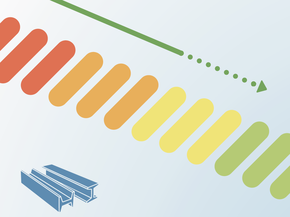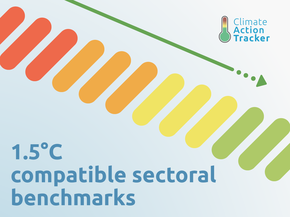Assumptions
Historical data
We obtain energy-related CO2 emissions from the IEA Emissions from Fuel Combustion database (IEA, 2018a), a time series from 1990 until 2015, and the IEA World Energy Outlook (WEO) 2018 for 2016 and 2017 values (IEA, 2018d).
All other emissions are based on the Chinese inventory as submitted to the UNFCCC for the years 1994, 2005, and 2012. This includes non-CO2 emissions from fuel combustion, fugitive emissions from fuels, industrial process emissions, agricultural emissions, and waste emissions. As of September 2018, the CAT uses Global Warming Potentials (GWPs) from the IPCC Fourth Assessment Report (AR4). We convert the Chinese inventory to AR4 GWPs on a gas by gas basis using data collected from the UNFCCC website by (Gieseke & Gütschow, 2018). Emissions are extrapolated to 1990 using sectoral growth rates from the PRIMAP-hist database (Gütschow, Jeffery, Gieseke, & Gebel, 2018). These emissions are extended to 2017 as described in the current policy section below.
Pledges
For China’s 2020 pledge, we estimate emissions under the non-fossil target and the carbon intensity targets separately. For China’s NDC commitment, we quantify the non-fossil target, the peaking target, and the carbon intensity targets separately. China’s rating is based on the non-fossil (upper end of the NDC target) and peaking targets (lower end of the NDC target) in 2030.
The elements of China’s targets that we quantify apply to CO2 or energy-related CO2 only (excl. LULUCF). To calculate total GHG emissions (excl. LULUCF), we add process CO2 emissions and/or non-CO2 emissions based on our current policies scenario for 2020 or 2030 as described in “current policy projections” below.
Non-Fossil Targets
China’s 2020 pledge aims for a 15% share of non-fossil fuels in its primary energy demand; the 2030 pledge increases this to 20%. We assume that this target excludes biofuels from primary energy demand.
To calculate energy-related CO2 emissions based on this target, we:
- Recalculate the total primary energy demand from the WEO 2018 Current Policies Scenario based on the Chinese methodology of applying the average efficiency of coal-fired power plants to calculate total primary energy demand from non-fossil sources (renewables and nuclear). We assume an efficiency of 310 gce/kWh, based on China’s target for 2020 from the 13th Five Year Plan.
- Modify the total primary energy demand from the WEO 2018 to meet China’s 10% gas target in 2020 and all future years by replacing coal with gas. In this scenario, the share of non-fossil fuels in primary energy demand slightly exceeds the targets, reaching 17% in 2020 and 21% in 2030.
- Further adjust the resulting total primary energy demand to precisely achieve the targets by replacing renewables with coal.
- Calculate emissions based on emissions factors calculated from emissions and total primary energy demand from WEO 2018.
Peaking Target
Since the NDC contains the target of peaking CO2 emissions latest in 2030, the implications for what an “NDC scenario” constitutes can be interpreted in a variety of ways—for instance, the least ambitious way would be to assume emissions keep rising and simply peak in 2030, a more ambitious interpretation would be to assume that this peaking happens somewhat earlier. We take the peak level of our minimum current policies scenario as the lower bound of CO2 emissions under the NDC scenario. We assume that the peaking target for CO2 emissions includes both energy and process-related CO2 emissions.
Carbon Intensity Targets
For the calculation of the intensity targets for 2020 and 2030, we use historical emissions data from China’s most recent inventory submission to the UNFCCC, historical GDP data from China’s 2017 Statistical Yearbook (National Bureau of Statistics of China, 2017) and GDP projections from WEO 2018 and IMF (IMF, 2017). Our projection calculations are based on the GDP growth rate from the IEA World Energy Outlook 2018 (5.8% annual growth between 2017 and 2025, and 3.7% annual growth between 2025 and 2030). We have used the IMF 2017 as an alternative scenario for 2017 to 2022 (average of 6.2% annual growth). We assume that the carbon intensity target applies to both energy and process-related CO2 emissions.
Current policy projections
Energy-related CO2 emissions
We create two scenarios for energy-related CO2 emissions, a minimum and a maximum scenario.
For the maximum scenario, we start with the WEO 2018 Current Policies Scenario, and adjust it to meet China’s 10% gas in the primary energy supply target in 2020 and all following years by replacing coal with gas. The scenario also meets China’s 58% cap on coal in the primary energy supply in 2020, exceeds the 15% non-fossil component of China’s 2020 pledge, and is roughly in line with China’s cap on total primary energy demand of 5 billion tonnes coal equivalent in 2020. Under this scenario, energy-related CO2 emissions continue to increase, reaching 10.8 GtCO2 in 2030.
For the minimum scenario, we also start with the WEO 2018 Current Policies Scenario, but adjust electricity generation to reflect electricity generation from renewables projected in the Stated Policies Scenario from the China Renewable Energy Outlook 2017 (CREO 2017) (China National Renewable Energy Centre, 2017). As in the maximum scenario, we adjust the primary energy supply to meet the 10% gas target in 2020 and all following years by replacing coal with gas. In addition to meeting the targets mentioned in the maximum scenario description, this scenario exceeds China’s proposed target of 35% electricity generation from renewables in 2030. Under this scenario, energy-related CO2 emissions remain roughly stable, reaching 9.4 GtCO2 in 2030.
In our 2017 and early 2018 analyses, we assumed that coal consumption would decrease at the rates that it did between 2014 and 2016 until 2030. Under this optimistic scenario, energy-related CO2 emissions would have peaked around 2017. However, due to the increases in coal consumption in 2017 and 2018, we have adopted a more conservative approach. Under the minimum current policies scenario, coal consumption still decreases substantially – falling 35% below 2016 levels by 2030.
Industrial-process emissions
We project industrial-process emissions by applying growth rates from cement process emissions for the non-OECD region based on the IEA Energy Technology Perspectives 2016 report’s 6DS scenario to the 2012 value for industrial process emissions from the Chinese inventory (IEA, 2016a). This means that 2012 – 2017 values for these emissions are projections.
Other non-CO2 emissions
For non-CO2 emissions from energy, fugitive emissions, agriculture, and waste, we apply growth rates for non-CO2 emissions from (US Environmental Protection Agency, 2012) to the 2012 values from the Chinese inventory, converted to AR4 GWPs as described above. We acknowledge that this source does not consider policies implemented since 2012, leading to increased uncertainty on Chinese non-CO2 emissions in particular in 2030. As with industrial process emissions, 2012 – 2017 values for these emissions are projections. In 2030, non-CO2 emissions make up 23 – 25% of projected total GHG emissions.
Global Warming Potentials
Previous assessments of the Climate Action Tracker used the global warming potentials (GWPs) from the IPCC’s Second Assessment Report (SAR). For this assessment we have updated all figures and time series to GWPs from the Fourth Assessment Report (AR4).
Further analysis
Latest publications
Stay informed
Subscribe to our newsletter





